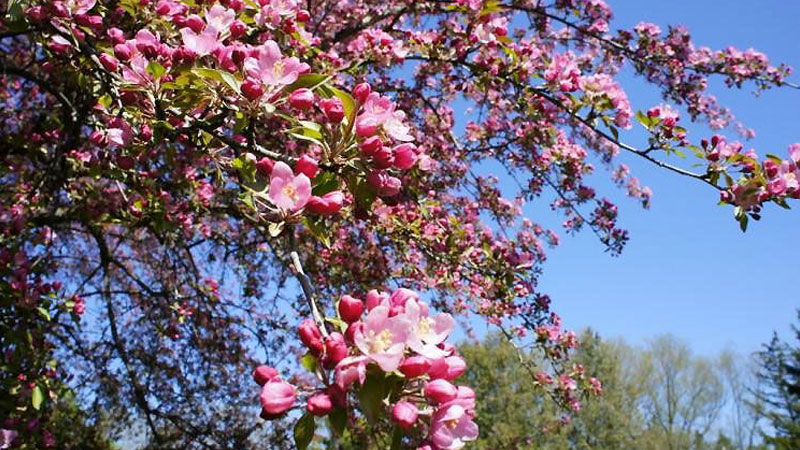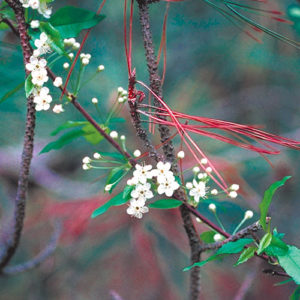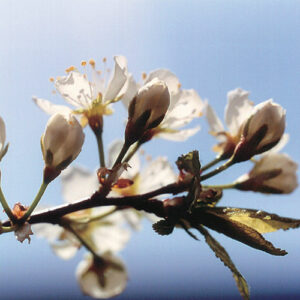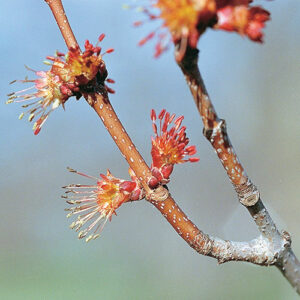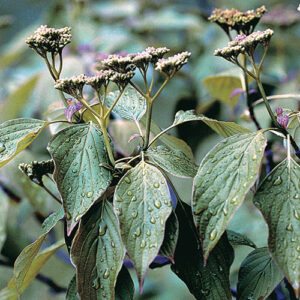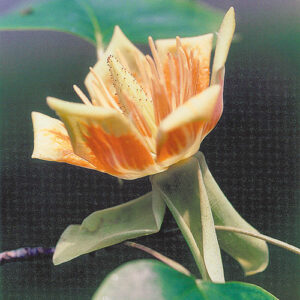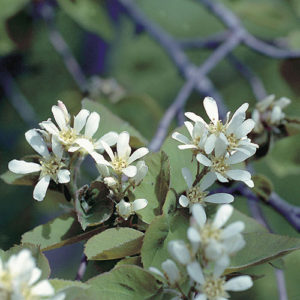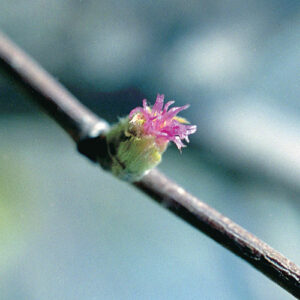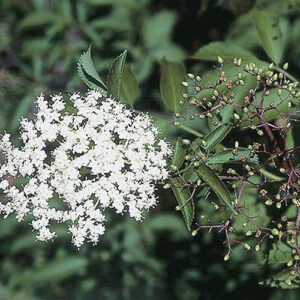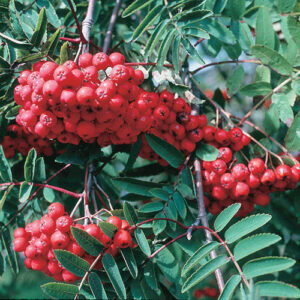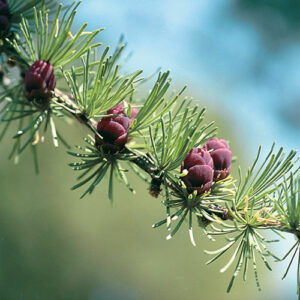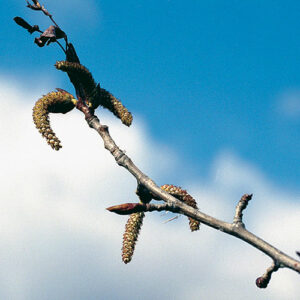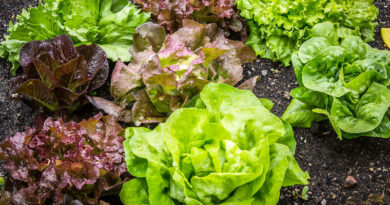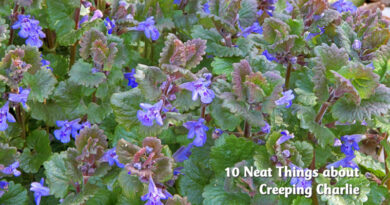Flowering Trees of Canada
Story by Michael Rosen, RPF
Photos by Daniel Tigner
Flowering trees are by definition deciduous trees – trees with leaves (as opposed to needles). Evolution has allowed deciduous trees to produce true flowers, which produce fruits. In conifers, the “flowers” are called strobili. The following list is a choice of native flowering trees which represent the province or territory that they are from in Canada. Many of these trees can be grown far from where they are naturally found.
Newfoundland: Pin cherry (Prunus pensylvanica)
Plant hardiness Zone: 2
Appearing in early June, when the leaves are about half-grown, the small, white flowers of the pin cherry are a reminder that warm temperatures and sunny days are on their way. Found from B.C. to Newfoundland, this medium sized (12-metre) but fast growing tree with its smooth, shiny and interesting bark is a natural for homeowners. A shade intolerant (meaning light-loving) tree, the pin cherry’s seed can live for many years in forest soils before germinating, abundantly producing a bright-red, edible fruit from July to August.
New Brunswick: Canada plum (Prunus nigra)
Plant hardiness Zone: 3
As the new leaves appear in May, the whitish-pink, showy and fragrant flowers are a beautiful welcome to summer. Canada plum occurs naturally from southern Manitoba to southern New Brunswick. It is known for its reddish yellow, 3-cm fruit that ripens in early September. These small trees (up to nine 9 metres) grow in clumps in river valleys and fence rows. They do well in high lime content soils. A wonderful tree!
Prince Edward Island: Red maple (Acer rubrum)
Plant hardiness Zone: 3
Nothing says spring is coming like the noticeably red flowers of the red maple. Appearing in late winter long before the leaves, the small flowers persist until mid-May after which they drop en-mass. A smooth-barked tree when young, forming rough plates when mature, this large (25-metre) red-twigged tree’s leaves turn a beautiful crimson red in the fall. Found naturally in southern Ontario, Québec and the Atlantic provinces, it is eastern Canada’s true “red maple”.
Nova Scotia:Pagoda dogwood (Cornus alternifolia)
Plant hardiness Zone: 3
A small (10-metre) understory tree, the dogwood is great as an ornamental and wildlife tree. The beautiful yet small white rounded cluster of flowers form after the foliage expands, generally in late June. With its interesting leaves, which turn red in autumn, the spreading horizontal tiers it forms, its alternate buds (all other dogwoods are opposite) it does justice to its name, “pagoda”. It forms blue berries on red stalks in mid-summer thus furthering its interest and appeal to gardeners.
Québec: Black cherry (Prunus serotina)
Plant hardiness Zone: 3
Black cheery is a forest giant at 22 metres high (72 feet). It is unsurpassed for the beauty of its flowers, fruit and distinct bark. Fast-growing when young, the bark goes from smooth and shiny (like pin cherry) to large, black plates with age. With a beautiful flower some 10 to 15 cm long, appearing in early summer after the leaves reach full size, this tree grows on a wide variety of soils and is generally intolerant of shade (sun-loving).
Ontario: Tulip tree (Liriondendron tulipifera)
Plant hardiness Zone: 5
It’s hard to believe that we can grow tulip trees in Canada, but we can in the temperate Carolinian forest in Ontario’s southwest corner. With its large showy, yellow, tulip-like flower, cut-top leaf, cone-like aggregate fruit and changing bark (green and white stripes when young, deep ridges when mature), this tree is a large (35-metre) standout for any landscape.
Manitoba: Nannyberry (Viburnum lentago)
Plant hardiness Zone: 2
Nannyberry is a shrubby tree, attractive to wildlife. With its round-topped clusters of white flowers and its bluish-black edible fruit, the tree is a popular one, especially for attracting birds and providing distinction in the garden. Found naturally from Manitoba to New Brunswick.
Saskatchewan: Saskatoon berry (Amelanchier alnifolia)
Plant hardiness Zone: 1
Historically significant Saskatoon berries were an integral part of the First Nation’s recipe for pemmican (buffalo meat). This small tree (four metres) produces a white fragrant flower as its leaves unfold in early summer. The most common native species of serviceberry west of Manitoba, Saskatoon berry will tolerate dry sites where it forms multiple stems and clusters of trees.
Alberta: Beaked hazel (Corylus cornuta)
Plant hardiness Zone: 3
Although not the most showy flower (a six-cm long catkin resembling the birches), the beaked hazel is worth planting for its small (one-cm) but edible nuts and its shrubby form which fits in well in smaller lots and areas where larger trees are not a possibility. It grows across Canada from British Columbia to Newfoundland.
British Columbia: Blueberry elder (Sambucus cerulea)
A multi-stemmed and shrubby tree, the 10-metre high blueberry elder is the largest of Canada’s elders, preferring to grow on dry open sites with stony or gravely soils. This shrub is best known for its flowers and fruit. It has large compound leaves and light brown-reddish bark. It grows in southwestern B.C. and Vancouver Island. The spectacular creamy white flat-topped flower appears in mid-summer after the leaves are fully-grown. The fruit, which ripen in early autumn, are bluish-black, resembling blueberries. The berries are quite sweet and attractive to birds.
Yukon: Sitka mountain ash (Sorbus sitchensis)
Sitka mountain ash is a six-metre (20 feet) high, shrubby, tree. It grows on disturbed sites in southern Yukon, British Columbia and inland western Alberta. Reaching the alpine tree line, its clusters of small (one-cm) flowers eventually form red, orange or purple fruits in clusters 10 cm across. Sitka ash has a rounded crown and smooth, light gray bark.
North-West Territories: Tamarack (Larix laricina)
Many think that the tamarack needle could have replaced the maple leaf on Canada’s flag. The tamarack is found in every province and territory in the country. It belongs to the only group of conifers (the larches) that lose their needles in winter. A large tree at 25 metres (82 feet) tall, it normally grows in bogs and fens as it appreciates a moist, but well-drained soil. Although being a conifer it does not have a true “flower”. Its red conelets formed in mid-summer are strikingly beautiful, if not showy.
Nunavut: Balsam poplar (Populus balsamifera)
The southwestern corner of Canada’s newest territory contains a variety of vegetation similar to its neighbours. Although Nunavut does not have a territorial tree, a good choice would be the balsam poplar. This poplar has wonderfully perfumed buds in springtime. The largest tree in Nunavut, it reaches 25 metres (82 feet) in some locations. The flowers of the balsam poplar are long, 10-centimtre catkins. A great shelterbelt tree, the balsam poplar is fast-growing and likewise grows right across Canada.



